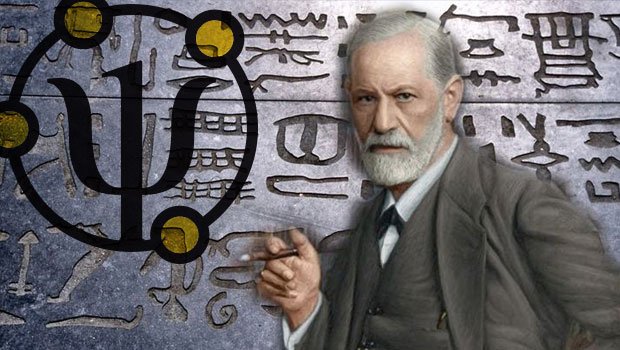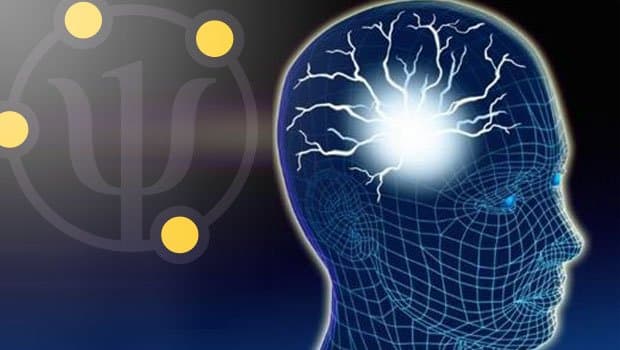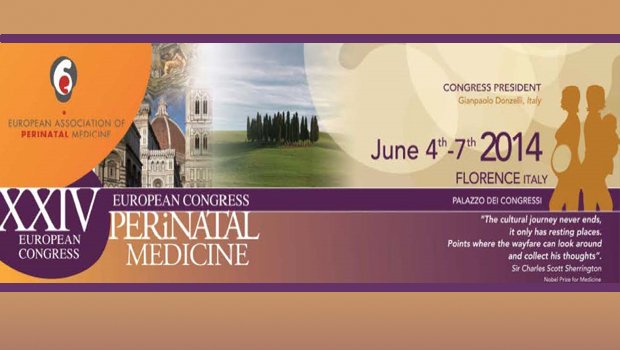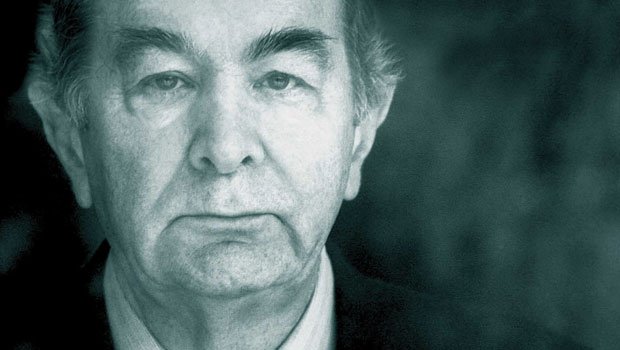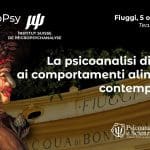To penetrate the heart of the matter, considering the brief time available, we should arm ourselves with some definition tools which act as a referral point.
The concept of the Ego is the central point. As it was known, for Freud the Ego is, above all, a form of organisation of the psychobiological material aimed at inserting the activity of thought between the Id’s own instinctive request and the concrete actions of the wish-fulfilment, which has the goal to project solutions for lowering the tensional levels by comparing the data of memorised experiences to perceptions, that are more or less congruous, of the real data present. 1
To have a simplified image of this matter, taken from common life, we could say that the ABS (Antilock Braking System), the famous safety system for regulating the wheels on a motor vehicle from locking up (or ceasing to rotate) while braking, is a part of the mechanic Ego of a car. The complex software which organises the intelligent integration in microseconds, of the perception of movement through sensors, of the prevision of the trajectories and of the analysis of the environment variables, can be correctly defined, from this point of view, as a small part of the car’s Ego.
A static but individual Ego. Individual, as an ABS projected for a specific car could have an aberrant behaviour for another car. Leaving behind the mechanical metaphor, we can say that certain portions of the Ego can become conscious, while several contents can remain unconscious. The fact that the Ego includes vast unconscious regions, has been proved by clinical observation, particularly by the unconscious resistances to the analytical treatment.
I suggest defining the Ego, in the current reference frame, as a set of memories of sensor-motor experiences which have determined a decrease of tension in the individual’s history.
According to N. Peluffo’s concept, in the beginning the Ego is in everything that is motion: this is true right from the uterine protohistory. During his unforgettable lectures at the University of Turin, Peluffo often referred to the Freudian definition of the human being as a deformable vesicle, reminding us that everything that is in tension must be susceptible to a deformation (motion) otherwise it risks the breaking of the psychobiological entity.
In the moment in which certain movements become more adapt than others with the aim of tension lowering, they will be repeated, initially following an instinctive drive and then, when the maturing of the mental operations makes it possible, following a voluntary decision.
According to Peluffo the pattern of the specific action, activated by the automatic dynamic of the tension-relaxation (the attempt of satisfying the need-desire), is the primary nucleus of the Ego.
When the memory and sensor-motor pattern tissue is sufficiently vast the pseudopodic activity of the Ego will take form and, subjected to the energetic-conation drive of the Id, it will amplify the Ego software through the activity of the projection-identification.
I intend to say that I can’t see an antinomy between the first freudian concept of an Ego derived from corporal perceptions (a concept which can be extended to the proto-memories of movement) and the second concept of an Ego that is formed through a series of identifications with the key-objects belonging to the infancy.
It simply seems to be a succession of processes of organisation characterised by an increase of the possibilities of mentalization.
To speak about the present subject I will refer, in particular, to the second phase of the Ego structuring which involves the binomial mother-son and the projection-identification dynamics in a privileged manner.
I retain that many cases, definable as border-line from a psychiatric point of view, derive from a failure of the self-individualisation mechanisms and from catastrophic defensive processes, above all denial and the splitting of the Ego.
The fictitious-Ego and the delirious-Ego are, therefore, the result of a splitting process in the Ego activated by a highly traumatic vicissitude. The Ego in formation divides itself into a simulacrum of the Ego, socially adapted but not authentic, and a de-structured Ego, constituted by traumatic phantasies (lacking contact with reality and therefore delirious).
Under the effect of a very powerful anguish of annihilation the Ego in formation evaporates, so to speak, and the subject begins to imitate in a stereotype, compulsive and derealized manner the social behaviour of one of key-figures of his infancy. This socially accepted recital, which we can define the fictitious-Ego, covers the delirious-Ego like a cloak and is constituted by the interpretative phantasies of the traumatic situation.
With regards to this, the speculations of Jung about the individual character and the collective character, seem interesting and worthy of further consideration. 2
The Author, describing clinical cases of dissociation of personality (which today would enter the category of border-line pathologies) even hypothesises that these subjects do not have an individual character, moreover a collective one and assume a personality in consonance with the circumstances and the general expectations.
We could hypothesise that a sort of genealogical super-individual Ego exists, probably ethnic, which during the iconic interaction of the two genetic donors first, and then of the intrauterine vicissitudes, acquires its own specificity and actualisation.
The borderline subjects would be subjects with a flaw of actualisation or individualisation of the psychism which would be formed, above all, by the imitation of socially accepted behaviours.
In the clinical material of all the borderline subjects treated by myself, the patients reach a point in which, effectively, they become conscious of the fact that they were rehearsing one or another key-figure of their infancy.
When the social rehearsal becomes impossible because of social pressure, the person cannot help playing the only remaining card he has: the delusion. And often this is trigged after a dream which has not been dreamed-off . 3
The social mask is de-structured, the subject’s mind offers itself to the service of the oneiric material, which is acted out, to the point of exhaustion of the energetic pressure, in the vigil life.
Regarding this last point, the clinical case of one of my borderline patients with a paranoiac structure of the personality, is emblematic. The man, who we will call Hansel, is in truth, a young giant man who, in the last ten years, has travelled back and forth between various psychiatric institutes in his region of residence, treated with massive doses of antipsychotic drugs and with a substantial cycle of electroshock-therapy. This is a clinical case that in the abstract and at first sight I would never have taken on board, since in micropsychoanalitic psychotherapies of psychotic or borderline subjects, based on three hour long sessions and a good dose of social rapports in which mothering is practiced limited to non-paranoid subjects, I have always privileged non-chronic subjects.
The things that made me inclined to take on Mr. Hansel’s case were two factors: the permanence of a genuine pressure towards knowledge and his evident good manners. That’s right: good manners! We are made to believe that psychotic subjects are all the same: actually Mr. Hansel wasn’t lacking in delirious contents with persecutory connotation and hallucinations, mainly auditive, etc., nevertheless, in the expression of his behaviour, the “Giant” was never threatening.
What we could define as “good manners” was nothing other than, in part an Ego fragment which was still undamaged, a condition without which it is not possible to commit oneself to a similar case, on the other hand, a salient characteristic of the fusion of masks that the young man impersonated: a saintly mother and a brother who died prematurely and had already been sanctified.
Hansel was like a baby and for this reason I have chosen this name to recall the absolute and primordial terror that the subject incessantly felt in the social confrontation situations and, particularly, in those with a sexual connotation. Completely dependent on a mother who was psychically absent, Hansel was imprisoned in a protection-persecution binding which was destroying him.
He had only had sexual experiences with prostitutes, limited to masturbation. Hansel had such a strong castration vicissitude that he affirmed in having only a tiny piece of penis, a residue of a supposed, disastrous frenulectomy.
Clearly, I did not have elements to judge the truth of his assertions but I had my suspicions since, from prior clinical material I had heard that his elder brother, ten years older, had died at a young age, this time precisely from a disastrous appendicectomy resulting in a deadly peritonitis.
His brother had been bound to his mother by such a notable incestuous bond which involved the sharing of the matrimonial bed (it is not known whether there was consummation or not), sharing that was justified by the nocturnal absences of the father (who was often at work).
To be brief, it was one of those dramatic cases that usually result in drug-addiction: a young man, fused in incestuous binding with his mother, sedates his unacceptable sexual-aggressive pressures with heroin, an extremely effective tranquillising psycho-drug.
Instead of breaking away in a healthy manner, the parents, pressed by their unconscious sense of guilt, unknowingly tighten the deadly noose of the incestuous symbiosis around the victim’s neck, to whom only an overdose or a fatal car-crash remains. The fact is that the young man who died was “too good” to fall prey to drug-addiction: the only solution remaining was self-destruction or a fatal accident, which is what actually happened. He admitted himself into a hospital, without informing his parents, into a ‘third world’ surgical division, from which he left as a corpse a few days later.
From that day on, his mother completely lost her mind: she was an absent presence, petrified in the memory for her ‘Saint’ son (of whom I even found a lock of hair between my hands while we were looking at family photographs: a well and truly revealing fetish) and now she could dedicate herself to her new burden: Hansel’s illness.
Whoever has a certain familiarity with the human mind, knows that Saints don’t exist: in fact, behind the elder brother’s mask of the ‘good guy’, a role played with absolute devotion in the relation with his mother and within the social environment, there was a Luciferian behaviour towards his younger brother, our Hansel, who was systematically tormented, intimidated, beaten and tortured. Hansel only realised this situation when observing his terrorised expression in all, and I mean all, the photos available of his infancy and the diabolical expression of his elder brother each and every time their eyes met.
The most emblematic photo was one of his fourth birthday in which his brother, behind his parents’ back, was brandishing the knife used to cut the cake, looking, in a most obvious manner, at his terrified younger brother.
To be brief, Hansel’s infancy had been hell: a lifetime spent escaping the clutch of his elder brother and of his brother’s friends who had elected him as the sacrificial victim.
It is easy to imagine how he must have lived the experience of a frenulectomy in such a situation, performed on an adult surgery ward.
It was probably during those nights, filled with pain, solitude and terror that Hansel’s Ego split definitively, replacing the reality with the nucleus of a delusion of persecution which later, became ulteriorly structured during the following years.
Hansel resided in a different city from myself and, after having travelled for months in order to have his sessions, he accepted to stay in my home town for a month.
This situation often produces the following effects: it unbinds the patient from the family container and enucleates him from the social role that persecutes and protects him at the same time. Therefore, the subject loses the possibility to continue wearing his Mask and displaces the paranoiac persecution into the transferral situation, something which, on one hand, increases the tension within the analytic situation but on the other hand, allows the observation in ‘real time’, of the delusion reference formation (the original characteristic of the relation with the analyst makes the relationship less manipulable).
On the other hand, the loss of the fictitious-Ego uncovers the delusion that can emerge in an unequivocal manner.
After several days, the analysed had begun to build a complicated delusion of reference in which, a Secret Organisation, headed by, ‘what a coincidence’ … myself, manipulated people’s lives.
One night Hansel dreamt that he visited a cemetery. The very next day, as soon as he awoke and still unaware of the dream, the memory of which emerged only later that afternoon, he got into his car, went onto the motorway and drove for about 600 km to visit the father, of an ex-girlfriend who he hadn’t seen or heard for over ten years, at the cemetery.
A few days later, back in the session, it was enough to recount, in detail, the whole event and to see the evident connections, for him to become aware, for the first time in his life, of how the delusion defence was activated in his mind. During the session he said: “The reason for the delusions is this: if I can’t analyse my dreams and dismantle them properly, these will take hold of my mind and my life”.
The evident connection between a not dreamed-off dream and a delusion, masterly described by Silvio Fanti, was however, already evident in Freud’s research.
Not only, in his famous work on the “Jensen’s Gradiva” 4 Freud shows how the delusion of the young Norbert Hanold develops furthermore through a dream, but already in “The Interpretation of Dreams” the Master clarifies: “… to the rapid change of the representations in the dream, corresponds the flight of ideas in the psychosis. In both cases any measure of time is lacking. The oneiric splitting of the personality which divides, for instance in the dream, one’s own knowledge between two different people, one of whom is unknown and corrects the Ego, is indeed equivalent to the well known splitting of the hallucinatory paranoia; even he who dreams hears his own thoughts exposed by unknown voices. An analogy even exists for the delirious fixed ideas: the pathologic dreams which repeat themselves in a stereotypic way (rêve obsédant). It is not rare that once healed from a delusion, the patients say that the whole period of the illness seemed to be a dream to them, which often, was not unpleasant and in fact they tell how, sometimes, while they were still ill, they had had the impression of only being imprisoned by a dream, as often happens in real dreams”. 5
I would like to end my contribution with some technical notes.
In “Micropsicoanalisi dei processi di trasformazione” of 1976, Peluffo had shown in a exhaustive manner the dynamic of the phantasms (phantasies) stimulus-answer which occurs in the maternal-foetal unity during the pregnancy. We can schematically recall, that the human embryo is held in the uterus even if it contains non-self genetic material, therefore, despite the histocompatibility rule, thanks to the narcissistic maternal investment on the “illness-son-penis of the mother-Itself”. It is here that the real mother-son fusion is formed. In the normal evolution a laborious de-fusional path is accomplished which should conclude with the acquisition of a psychic individuality of both poles. So, the borderline subjects are fixated to the intrauterine fusional stage of the “penis of the mother-Itself”; there has not been a renunciation (elaboration of loss) by the mother of this investment and both the elements of the fusional set work against the individualisation-separation process.
I would like to underline that it is never only the mother who ‘holds onto‘ but also the foetus who makes itself be ‘held onto’.
For this reason, in my experience, I believe it is important for the therapeutic success that the micropsychoanalyst conducts a period of at least twenty long sessions with the psychotic subject’s mother.
In this way the analyst will become the new ground (projective screen) of the repetition of the intrauterine vicissitude, allowing new possibilities of elaboration of the conflict which avoid the compulsion to repeat.
The delusion contents in the treatment of psychotic subjects must always be held in the maximum consideration. In an advanced stage of the work, in a positive transferral stage, they can be analysed as if they are dreams. We will see, therefore, that their apparent absurdness corresponds to precise elements of the clinical material.
A technical solution which I find useful is to tell the patient to localise the ‘day’s residues” of the delusion in the 24 hour material.
He will then be invited to speak about the real situation in which, according to him, his delirious sensations have been confirmed. I have often verified that such fragments enter the dream as the ‘day’s residues’ and are then ulteriorly elaborated.
Let’s return to Mr. Hansel, I can say that he no longer takes antipsychotic drugs, he has no longer been admitted into psychiatric hospitals, he has a job and a girlfriend: I would say that Hansel has come out of the Witch’s cage and now he walks peacefully in the world.
Written by: Quirino Zangrilli © Copyright
Translated by Linda De Nardo
Notes:
1 S. Freud, Compendio di psicoanalisi, 1938, Opere, Vol. 11.
2 C.G. Jung, Dizionario di Psicologia Analitica, Boringhieri, Torino.
3 S. Freud, Il delirio e i sogni nella “Gradiva” di Wilhelm Jensen, Opere, Vol. 5, 1914.
4 S. Freud, L’interpretazione dei sogni, Opere, Vol. 3, 1899.
* This work consitited an official report in the Congress “Le incognite dello sviluppo” held in Aosta on the 12th – 13th october 2001.
Nel 2024 riceve il Premio Accademico d’Onore della Accademia Culturale Internazionale Cartagine 2.0.
Doctor Quirino Zangrilli was born in Fiuggi in 1955. Graduated with honours in Medicine and Surgery in 1980, he practices Psychoanalysis, with intensive method, since 1982. He is author of 72 scientific pubblications. He has attended as speaker or president of session to many national and international scientific Conventions. His book “La vita:involucro vuoto” (Life: empty involucre), published by Borla in 1993, has been in use by the Chair of Dynamic Psychology at Turin’s University since 1994. He is the author and founder of the multimedia review “Psicoanalisi e Scienza” (Psychoanalysis and Science), the most read Italian on line review of psychoanalysis. In 2012 he participated as a Speaker at the Scientific Festival of BergamoScienza. In 2013 he illustrated his research on the maternal-fetal interaction in the Special Session of the XI World Congress of Perinatal Medicine in Moscow with his relation “Intrauterine Imprinting”. He is visiting teacher at Moscow Institute of psychoanalysis and training psychoanalist of Swiss Institute of Micropsychoanalysis.
In 2024 he received the Honorary Academic Award of the Carthage 2.0 International Cultural Academy
Le Le Docteur Quirino Zangrilli est né à Fiuggi en 1955. Diplômé avec mention en Médecine et Chirurgie en 1980, il pratique la psychanalyse depuis 1982, en utilisant une technique intensive. Il est l’auteur de 72 livres et publications scientifiques. Il a participé en tant que conférencier ou président de session à de nombreuses conférences scientifiques nationales et internationales. Son livre “La vie : enveloppe vide”, publié par Borla en 1993, est adopté depuis 1994 par la Chaire de Psychologie Dynamique de l’Université de Turin. En 1994, il a reçu le “Prix national Ciociaria de médecine”. Il a conçu et fondé le magazine multimédia “Psicoanalisi e Scienza”, qui est le magazine de psychanalyse en ligne en italien le plus suivi au monde. (Source : Entireweb, Alexa, Google, Virgilio, Arianna., etc.). En 2012, il a participé en tant que conférencier à la colloque scientifique de BergamoScienza. En 2013, il a exposé ses études sur l’interaction materno-fœtale lors de la session spéciale du XIe Congrès mondial de médecine périnatale à Moscou avec le rapport “Intrauterine Imprinting”. Il est chargé d’enseignement au cours de spécialisation de trois ans en psychanalyse, psychothérapie psychanalytique et consultation psychanalytique à l’Université de Moscou. Il est membre didacticien de l’Institut Suisse de Micropsychanalyse et de la Commission pour la Pratique de celui-ci.
En 2024, il reçoit le Prix Académique Honoraire de l’Académie Culturelle Internationale Carthage 2.0.
В 2024 был награжден Почетной академической премией Академии Международной Культуры «Карфаген 2.0».

